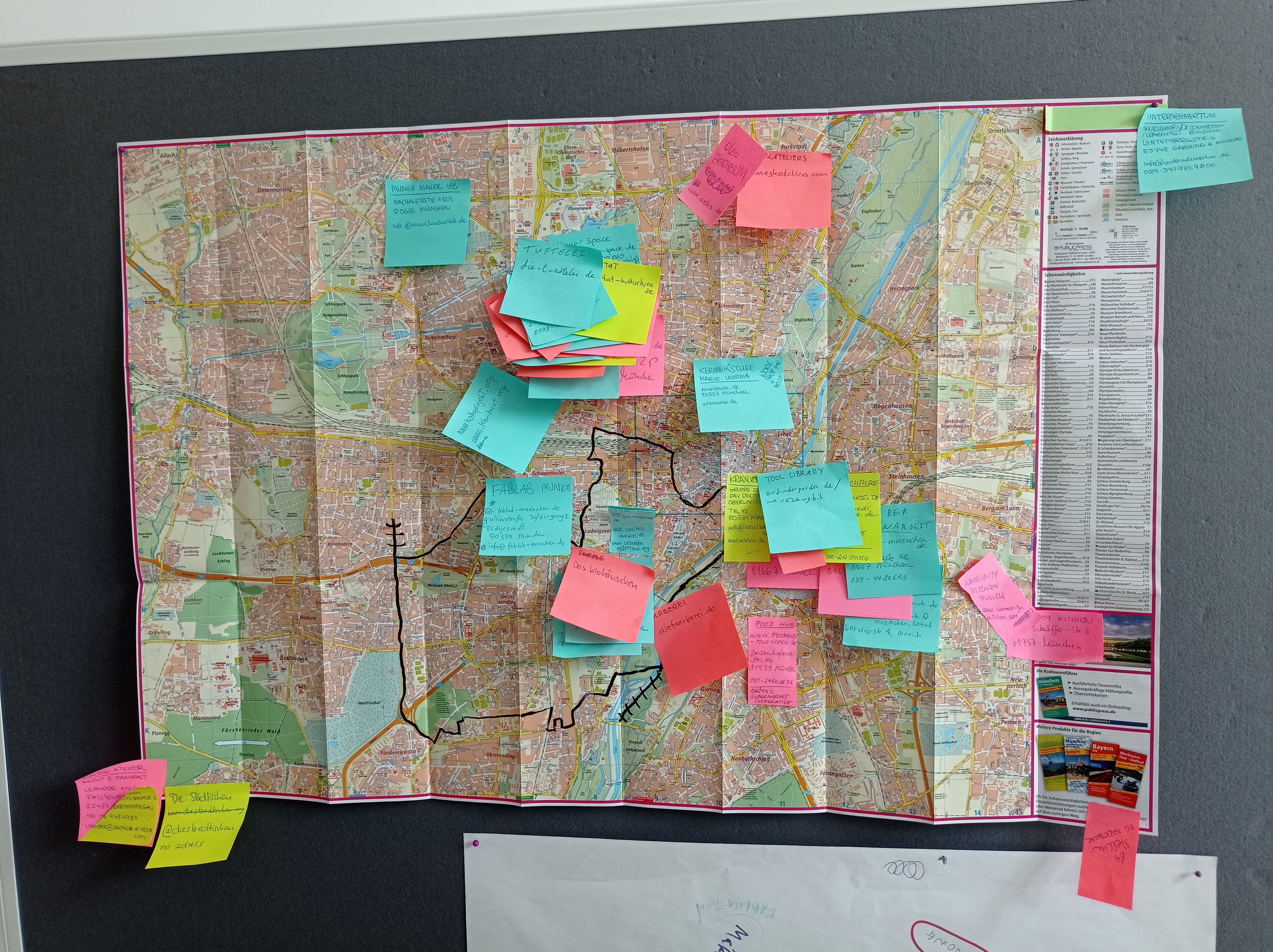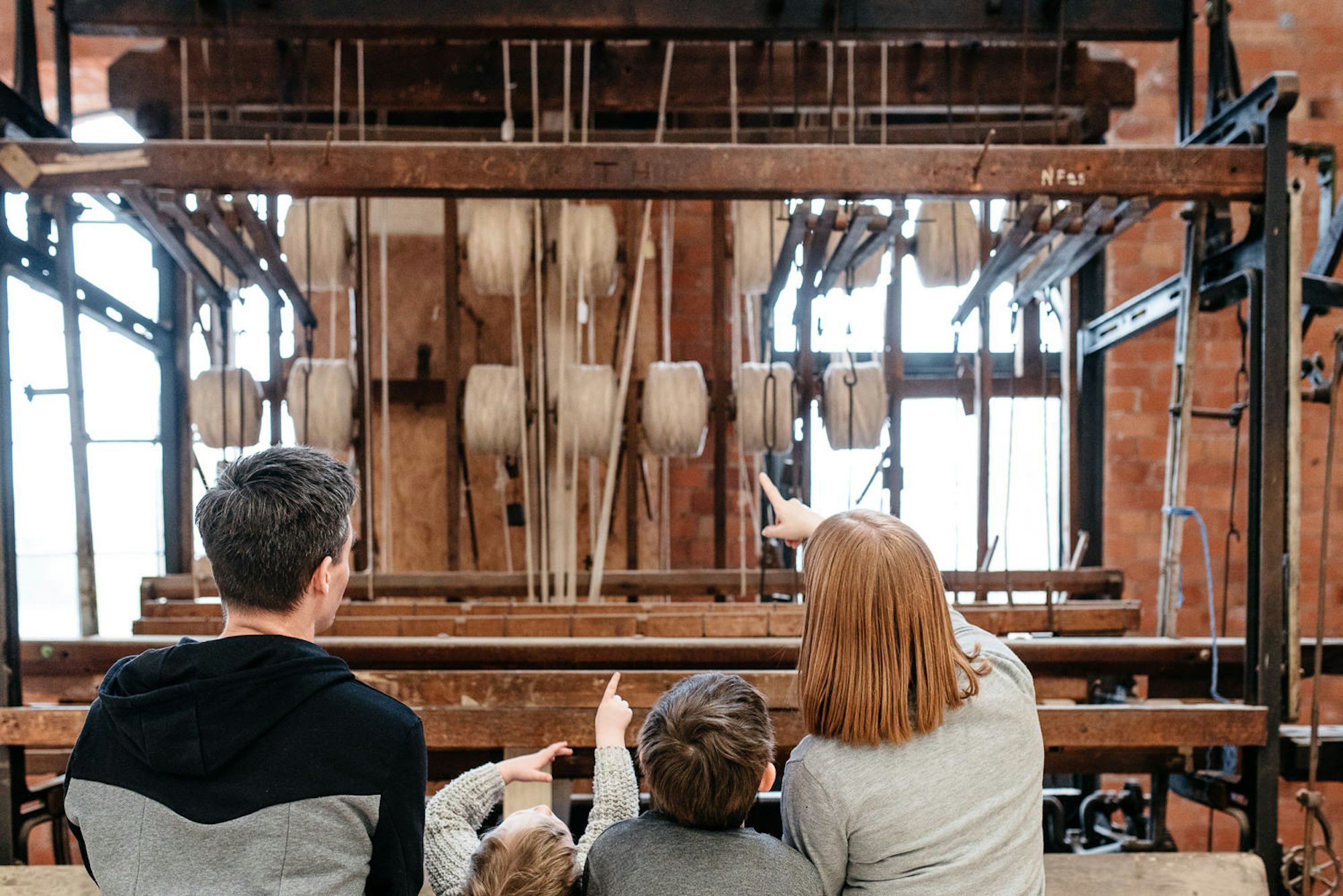Stories / How to guides /
Guide to Screenprinting

This Guide to Screen Printing was written by Ellie Hodesdon – who runs Eastend Press, a Glasgow-based commercial screen printing bureau producing hand printed items for local businesses.
Screen Printing is a type of stencil printing, where ink passes through a fabric or mesh screen. These screens are made from thin fabrics, traditionally silk but nowadays usually a synthetic alternative, which is stretched tightly over a metal or wood frame. It can be used to print onto a flat surfaces, including other fabrics, papers, metals or wood; and is a process commonly used in printmaking, graphic design and textiles.

The idea behind screenprinting is to block out or make impermeable the areas that you don't want to be printed. Ink or paint is then forced through the rest of the screen with a rubber blade, known as a squeegee onto the surface you want to print onto. The stencil can be created by applying an adhesive film (like vinyl or tape) or paper, painting onto it using ‘screen blockers’ (glue, lacquer) or by coating the screen with a light-sensitive emulsion which is then developed as a photograph.
What can you use screen-printing for?
Screen printing can be used to apply ink to any flat surface, although the smoother the surface the better the results. Fabric and paper are the most commonly screen printed surfaces, although wood, glass, perspex and metal are also options. Screen printing is favoured as a printing method due to the tactile nature of the resulting print and the saturated colours that it creates with ink. It's very difficult to get the same depth and intensity of colour when printing digitally.

How does screen printing work?
The ‘screen’ in screen printing refers to a metal or wooden screen, over which a fine fabric, or mesh is stretched. The design to be printed is then created as a stencil onto this mesh, with the areas not to be printed being blocked out, and the areas to be printed left as mesh. Through this mesh, ink is pressed, using a rubber squeegee.

The stencil on the fabric screen can be created by painting on glue or lacquer, or by applying adhesive film or paper. Most commonly though, stencils are made by painting a light-sensitive emulsion onto the screen which is then developed, in a process similar to developing a photograph.
This emulsion is sensitive to light and remains water soluble until exposed to light. Once exposed to light, the emulsion hardens to the screen and can only be removed with chemicals. The emulsion is therefore applied in a dark room and left to dry. A negative of the image to be printed is then placed over the screen (in the form of an opaque drawing or shape) and the screen is exposed to light. Where the light has been blocked from hitting the screen (where your opaque image has been) the emulsion remains water soluble, so once the screen is rinsed in water your blocked image area washes away, leaving the exposed mesh. It is through this exposed mesh that your image can be printed.

The emulsion method of creating a screen is most common, because it allows results to be precise and tends to make screens last longer, meaning that many identical prints can be produced over time.
What sort of inks can I use?
Pigments, paint or anything liquid can theoretically be used to screen print, and the inks used in screen-printing vary depending on the surface you are printing on to.

For printing on fabrics, fabric inks can be used that, once heat set, create machine washable printed textiles. Catalysed inks can also be used to permanently mark glass, perspex or metal. Glitter, textured and puff inks can be used on various surfaces. With all inks though, normally a medium is added to the colour. This extends the life of the ink, allowing you to print a longer run before the colour dries in the screen.
The medium can also be used to create a translucent finish to the ink, meaning two colours can be layered up to create a third colour.
Providing the screen has been prepared and exposed properly there is no limit to the number of prints that can be printed from the coated screen and it can be washed with water and reused many times.
What other tools and equipment do I need?
Aside from facilities to make and clean the screen, there are a few useful tools you need around for screenprinting.
Squeegee:
The squeegee is a long rubber blade in a wooden or metal handle. The blade can come in different hardness of rubber, with the harder rubber being most suitable for fine details and paper printing and a softer rubber being used for less details and fabric printing.

Printing Press:
Although you can screen print directly onto any flat surface, the screen is normally used with a printing press. This makes registering multiple prints easier and more accurate as it holds the screen in one position while you're printing. It also makes printing multiples faster as the screen is held in one place while you are changing and registering the paper or surface you are printing onto.

Normally the press has a vacuum attached to the base of the table, this sucks the paper down, holding it in position while you are printing. When screen printing big lengths of fabric then a long, flat table is used and often two people will print together, passing the squeegee between them and holding the screen in place. As only a thin layer of ink is printed, meaning on a porous surfaces such as paper and fabric the ink dries very fast. This means applying the next colour can happen straight away as the surface is already dry.
Where did the process come from?
Screen printing has its origins in the Far East where it was used extensively as early as 1000AD but it only really began to gain popularity in Europe at the start of the 20th century, coming into commercial use in the 1920's. Artists first began using Screen printing in 1930s America and the term ‘serigraph’ was initially used to denote an artist’s print, as opposed to commercial work. It has been widely used by artists as a printmaking technique since the 1950s. Screen printing is still commonly used by artists and print makers to create editions of prints.
What other technical details do I need to know?
Mesh Counts and Image Detail:
Depending on the size of the mesh in your screen, you can achieve a high level of detail with screen printing - with the higher the mesh count, the smaller the spaces between threads and so the greater the detail of the print. Sometimes you need to use a different mesh count to print onto different surfaces, depending on how ink takes to them.
It's also possible to print with multiple colours, with each colour being printed as a separate layer of ink. This makes screen printing quite a time consuming print method as individual screens need to be prepared for each colour layer of the design. It also creates the iconic look associated with Screen Printing of a flat, limited colour pallet, made famous by Andy Warhol.
As the colour is printed as a spot colour in one layer there is no ability to vary tone with individual printed layers. The colour is flat and solid and the tone even. However when preparing artwork to screen print there is the option to create the image using half tones. This is where the image is made up of varying size dots of the same colour, creating the illusion of varying tone.
Any flat surface can be printed, in any colour. There is no limit on the number of colours that can be used, or the size of the print run. However, as screen printing is quite a time consuming and therefore expensive printing method it is generally used for smaller print runs.

How is Screen printing used?
Screen printing is arguably the most versatile of all printing processes so is used by many different industries. It can be used to print on a wide variety of surfaces and some common products screen printed include ceramic decals, signage, electronic circuit boards, posters and textile garments and merchandise such as tote bags and tshirts.


The advantage of screen printing over other print processes is that you can print onto substrates of any shape, thickness and size in any colour or ink.

If you are interested in having something screenprinted in Scotland, you can check out Eastend Press's listing here.
If you're looking to produce some screen prints, alongside Eastend Press, you can have them made by Tessuti Scotland or Moody Monday in Edinburgh.
We also have a number of workshops and facilities where you can access equipment and take classes to screenprint yourself. In Glasgow there's Square Club, Glasgow Print Studio. In Edinburgh there's Edinburgh Printmakers and Process Studios. In Dundee you can find DCA Print Studio, in Aberdeen there's Peacock Visual Arts and up in Inverness there's Highland Print Studio
If you've enjoyed this Guide to Screen Printing and are keen to learn more about printing read our Guide to Print Making
Categories
How to guides
Related stories
Guide to Printmaking
Guide to Leather
Guide to Ceramics
Guide to Jewellery production
Guide to Ceramics - part two





